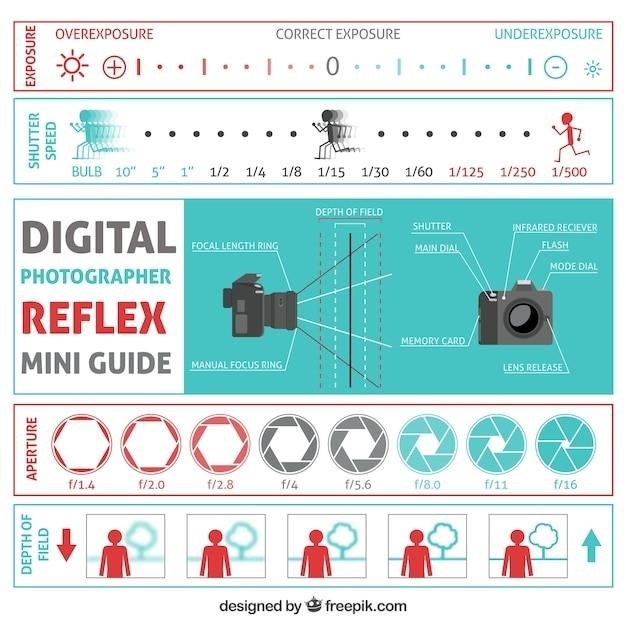
Who Writes Car Manuals?
Car manuals are written by a variety of individuals and teams, including automotive engineers, technical writers, and subject matter experts. These individuals work closely with Original Equipment Manufacturers (OEMs) to ensure that the manuals are accurate, comprehensive, and easy to understand for car owners.
The Importance of Car Manuals
Car manuals are essential companions for every vehicle owner, serving as a comprehensive guide to understanding and maintaining their vehicle. These manuals provide a wealth of information, empowering owners to make informed decisions regarding their car’s care, operation, and troubleshooting.
From the basics of starting and driving to advanced maintenance procedures, car manuals offer a detailed roadmap for responsible vehicle ownership. They outline essential safety precautions, explain the functions of various components, and provide step-by-step instructions for common tasks like changing tires, checking fluids, and performing routine maintenance.
Moreover, car manuals act as invaluable troubleshooting resources, guiding owners through the identification and resolution of potential problems. They often include detailed diagrams, illustrations, and technical specifications, aiding owners in pinpointing the root cause of issues and finding appropriate solutions.
By providing this crucial information, car manuals empower owners to take control of their vehicles, fostering a deeper understanding and appreciation for their automotive investments. They encourage preventive maintenance, promote safe driving practices, and ultimately extend the lifespan of the car, ensuring optimal performance and reliability.
Types of Car Manuals
Car manuals come in a variety of formats, each catering to different needs and levels of expertise. The most common type is the owner’s manual, which is typically provided with the vehicle upon purchase. This comprehensive guide covers basic operation, safety features, maintenance schedules, and warranty information.
For more in-depth information on vehicle repair and maintenance, service manuals are essential. These detailed documents provide step-by-step instructions for disassembling, repairing, and reassembling various components, often accompanied by detailed diagrams and technical specifications.
Another type of car manual is the workshop manual, which focuses on specific repair procedures and technical information for a particular model or engine. These manuals are frequently used by professional mechanics and technicians but can also be valuable resources for DIY enthusiasts.
Additionally, there are specialized manuals for specific aspects of vehicle operation, such as electrical wiring diagrams, parts catalogs, and troubleshooting guides. These manuals cater to specific needs, providing focused information for particular areas of vehicle maintenance or repair.
Car Manuals for Specific Makes and Models
Car manuals are meticulously tailored to each specific make and model of vehicle, ensuring that the information provided is relevant and accurate for the particular car. This detailed approach ensures that owners have access to precise instructions and guidance specific to their vehicle’s unique features, components, and systems.
For example, a manual for a Toyota Camry will differ significantly from one for a Ford Mustang, reflecting the distinct design, engineering, and functionalities of each car. This specificity allows owners to understand the nuances of their vehicle, including its operation, maintenance requirements, and potential issues.
Moreover, car manuals often include model year variations, as manufacturers may introduce updates or modifications to their vehicles over time. This ensures that owners have access to the most up-to-date information for their specific year and model, maximizing the accuracy and relevance of the manual’s content.
Original Equipment Manufacturer (OEM) Manuals
Original Equipment Manufacturer (OEM) manuals are the definitive guides for car owners, directly produced by the vehicle’s manufacturer. These manuals are considered the gold standard for accurate and comprehensive information, as they are developed by the same engineers and technicians who designed and built the car.
OEM manuals cover a wide range of topics, including vehicle operation, maintenance schedules, safety features, troubleshooting tips, and warranty information. They are typically included with new cars or can be purchased separately from the manufacturer.
OEM manuals are often written in a clear and concise style, using technical language that is accessible to both novice and experienced car owners. They are also heavily illustrated with diagrams and photographs to aid in understanding complex procedures and identifying specific parts.
Aftermarket Manuals
Aftermarket manuals are an alternative to OEM manuals, often published by independent companies that specialize in automotive repair information. These manuals are typically designed for a broader range of vehicle models and provide detailed instructions on a variety of repair procedures.
While aftermarket manuals may not be as comprehensive as OEM manuals, they can be a valuable resource for DIY mechanics and those seeking more detailed information on specific repairs. They often include troubleshooting guides, wiring diagrams, and exploded views of components, making them a great tool for diagnosing and resolving mechanical issues.
However, it’s essential to note that aftermarket manuals can sometimes contain outdated or inaccurate information, especially for newer vehicles. It’s always recommended to cross-reference information from multiple sources and consult with a qualified mechanic if you have any doubts about the accuracy of the information.
Haynes Manuals
Haynes Manuals, a renowned series of automotive repair manuals, are published by the British company Haynes Publishing Group. These manuals are known for their comprehensive coverage of a wide range of car and motorcycle models, providing detailed instructions on maintenance, repair, and troubleshooting.
The manuals are written by a team of experienced automotive experts, technicians, and writers who carefully research and document each vehicle’s systems and components. They are often accompanied by clear illustrations, diagrams, and step-by-step instructions, making them a valuable resource for both novice and experienced DIY mechanics.
Haynes Manuals have gained a reputation for their user-friendliness and practicality, offering a cost-effective alternative to expensive professional repairs. They have become a staple for many car owners who prefer to tackle maintenance and repairs themselves, providing them with the knowledge and guidance to confidently work on their vehicles.
Chilton Manuals
Chilton Manuals, a well-established brand in the automotive repair manual industry, have been providing comprehensive repair information for decades. These manuals are known for their detailed coverage of a wide range of vehicle models, including both domestic and imported cars.
Chilton manuals are typically written by a team of experienced automotive technicians and engineers who have extensive knowledge of vehicle systems and repair procedures. They meticulously research and document each model’s specifications, providing detailed instructions, diagrams, and troubleshooting tips.
These manuals are designed to assist both professional mechanics and DIY enthusiasts, offering a valuable resource for understanding vehicle systems, performing repairs, and addressing maintenance issues. Chilton manuals have earned a reputation for their accuracy, clarity, and comprehensive approach, making them a trusted source of information for many automotive professionals and car owners alike.
Other Car Manual Publishers
Beyond the prominent names like Haynes and Chilton, several other publishers contribute to the world of car manuals. These companies often specialize in specific vehicle segments, such as vintage cars, performance vehicles, or specific makes and models.
Some notable examples include CarTech, which caters to hardcore automotive enthusiasts with manuals focused on high-performance modifications and specialized repairs. Another publisher, BooksBooks4Cars, offers a vast selection of original factory and aftermarket manuals for various makes and models, ensuring comprehensive coverage for car owners and mechanics.
These publishers often collaborate with automotive experts, engineers, and technicians to ensure the accuracy and reliability of their manuals. They also leverage their expertise to provide in-depth information on specific vehicle systems, troubleshooting techniques, and advanced repair procedures, making their manuals valuable resources for both professionals and DIY enthusiasts.

The Role of Automotive Experts
Automotive experts play a crucial role in shaping the content and accuracy of car manuals. These individuals possess deep knowledge of vehicle systems, mechanics, and repair procedures, ensuring that the information presented in the manuals is reliable and technically sound.
Engineers, mechanics, and technicians with extensive experience in the automotive industry contribute their expertise to the development of car manuals. They provide insights into the intricacies of vehicle design, operation, and maintenance, ensuring that the manuals cover essential aspects of vehicle care and troubleshooting.
Their contributions extend beyond technical details. Automotive experts also play a key role in ensuring clarity and comprehensiveness. They help to translate complex technical information into language that car owners can easily understand, making the manuals accessible to a wide audience. Their expertise ensures that the manuals are not only accurate but also practical and user-friendly.
The Importance of Accuracy and Clarity
Accuracy and clarity are paramount in car manuals, as they serve as essential guides for car owners. These manuals provide crucial information on operating, maintaining, and troubleshooting vehicles, ensuring safe and efficient use.
Inaccurate information can lead to misdiagnosis, improper repairs, and potentially dangerous situations. A clear and concise manual helps owners understand their vehicle’s functions, perform routine maintenance, and identify potential issues.
The language used in car manuals must be accessible to a wide range of readers, from those with technical backgrounds to those with limited automotive knowledge. Simple, straightforward language, accompanied by clear illustrations and diagrams, ensures that even complex procedures can be understood. A well-written manual empowers owners to take ownership of their vehicle’s care and maintenance, ultimately contributing to a safer and more enjoyable driving experience.
The Future of Car Manuals
The future of car manuals is evolving alongside advancements in automotive technology. The rise of electric vehicles, autonomous driving systems, and connected car features is transforming the way we interact with our vehicles.
Traditional paper manuals are likely to become less common as digital formats become more prevalent. Interactive digital manuals, accessible through in-car displays or mobile apps, offer a more engaging and user-friendly experience. These digital manuals can be updated in real-time, ensuring owners always have the latest information.
The increasing complexity of modern cars necessitates a shift towards more comprehensive and personalized manuals. Augmented reality (AR) and virtual reality (VR) technologies have the potential to revolutionize car manuals. AR applications can overlay digital information onto real-world objects, providing step-by-step instructions for maintenance tasks. VR simulations can allow owners to experience various vehicle functions and systems in a virtual environment, enhancing their understanding and knowledge.


